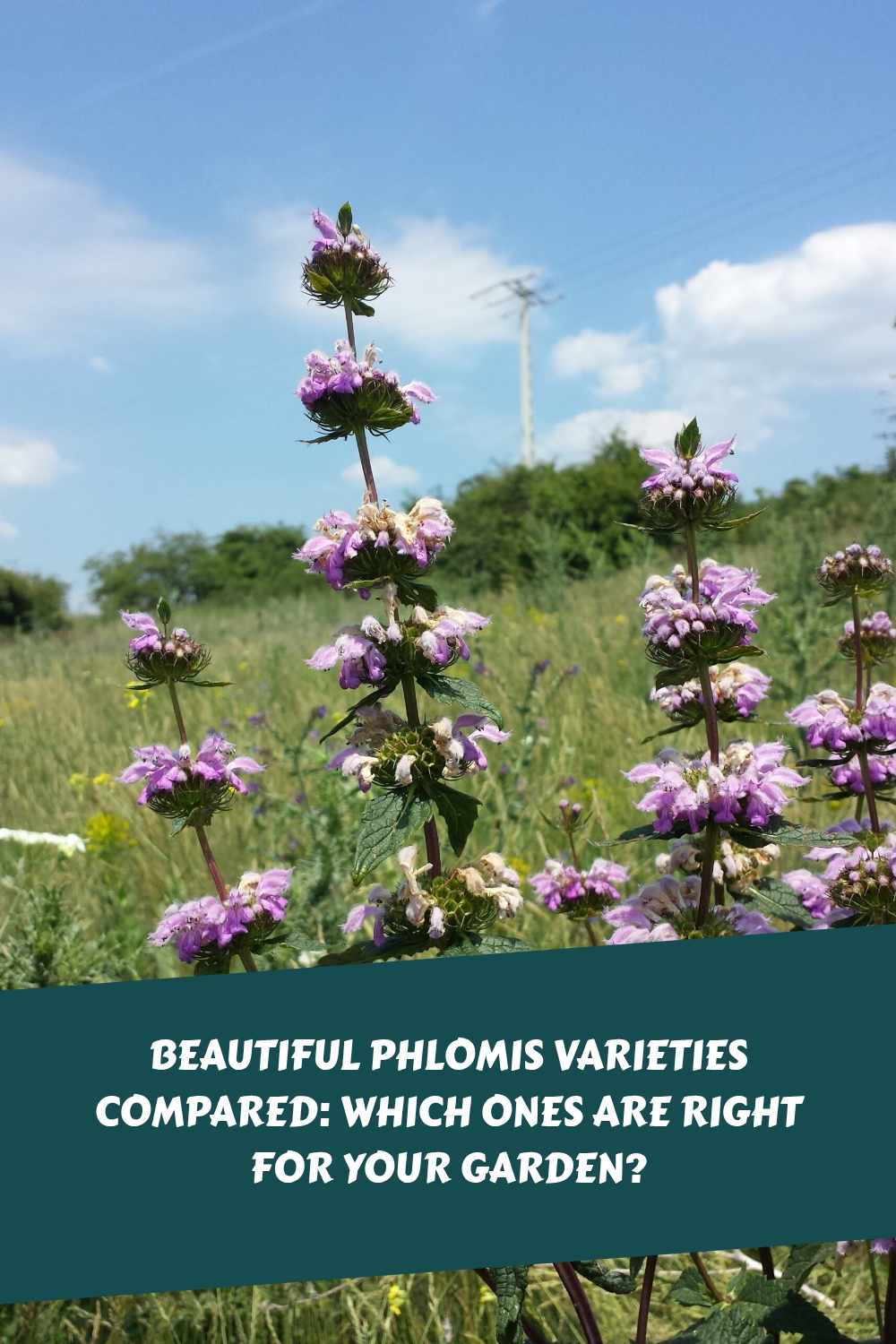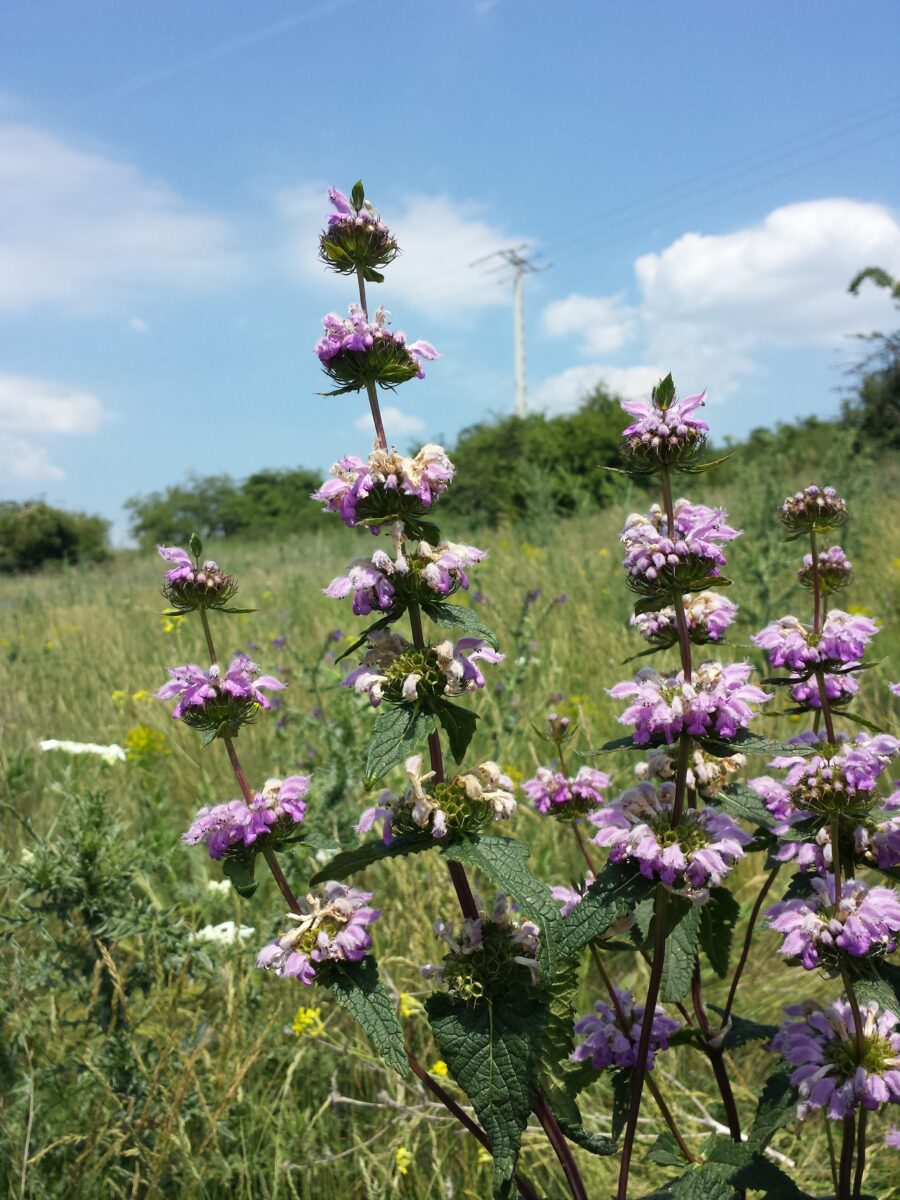
If you’re looking for a drought-tolerant, pollinator-friendly plant that brings architectural drama and year-round interest, Phlomis should be high on your list.
This striking genus in the mint family (Lamiaceae) includes herbaceous perennials and evergreen shrubs, each offering tiered whorls of flowers and bold foliage.
In this post, we compare three of the most garden-worthy species: Phlomis russeliana, Phlomis tuberosa, and Phlomis fruticosa. We’ll cover their differences, hardiness, ideal growing conditions, and care tips to help you choose the right one for your garden.
It can be hard to source the perennial Phlomis varieties. In fact, for that reason, I actually grew the Phlomis russelliana and Phlomis tuberosa plants featured here from seed. It took around 3 years for them to fill out and flower well.
Featured Image: Phlomis tuberosa by Stefan.lefnaer is licensed under CC BY-SA 4.0.
Phlomis russeliana (Turkish Sage)
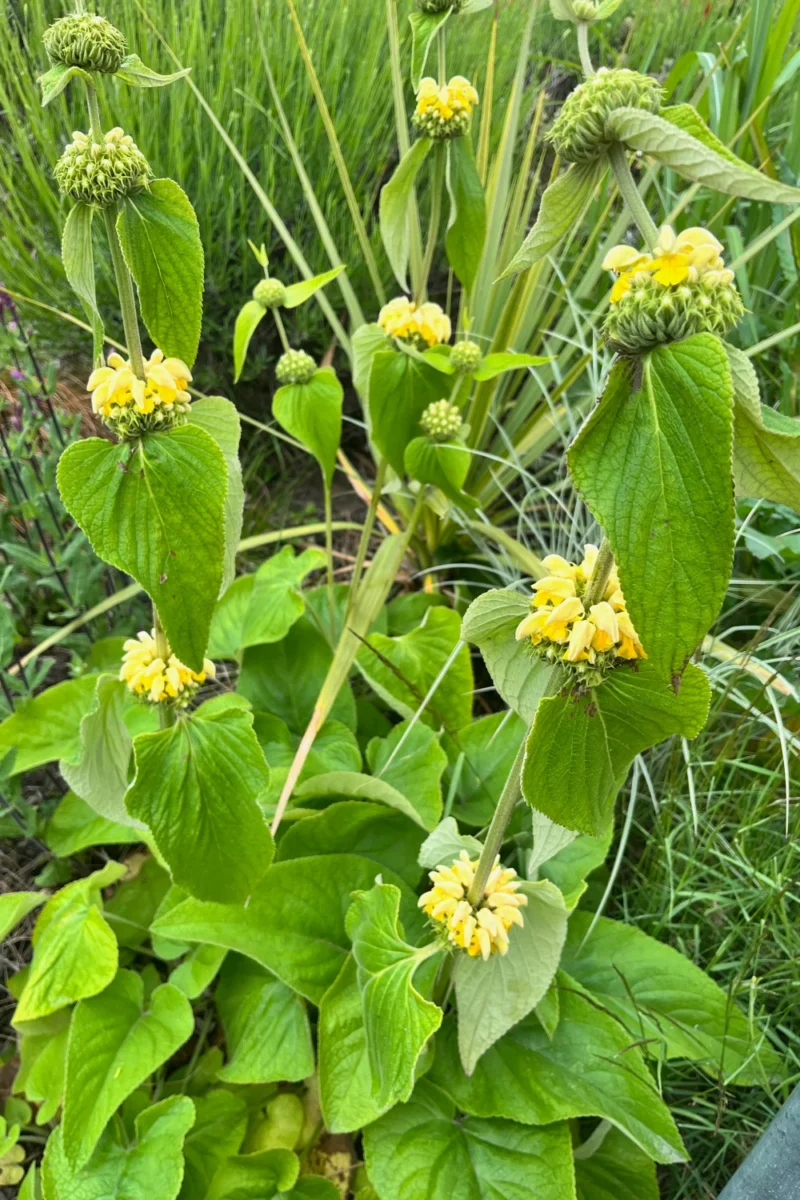
Overview:
Phlomis russeliana is a hardy herbaceous perennial native to Turkey. It forms a dense clump of soft, felted, grey-green foliage with tall flower spikes that reach around 90–120cm in height. From late spring into summer, it produces distinctive whorls of soft yellow flowers on upright stems. Even after blooming, the seed heads remain standing, adding strong winter structure.
Hardiness:
- Hardy to around -20°C (-4°F)
- Suitable for USDA Zones 5 to 9
Growing Conditions:
- Prefers full sun but will tolerate light shade
- Well-drained soil is essential, though it copes with poor, dry soils
- Once established, it is drought-tolerant and very low maintenance
Care Tips:
- Cut back dead flower stems in late winter or early spring
- Divide clumps every few years if they become congested
- Avoid overfeeding or heavy mulching, which can lead to rot
Best For:
- Cottage gardens
- Wildlife borders
- Winter interest in naturalistic plantings
Phlomis tuberosa
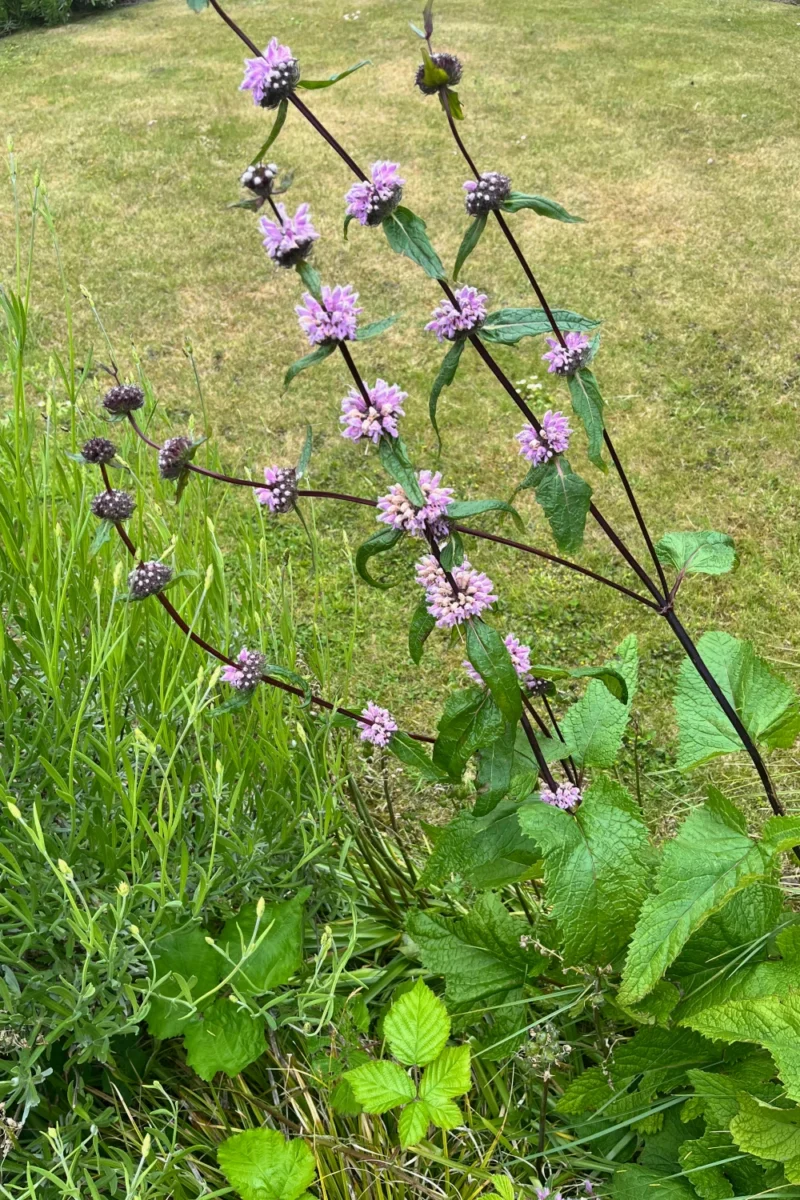
Overview:
Phlomis tuberosa is a taller, more open plant with a softer, wilder appearance than russeliana. It grows up to 150cm tall and features whorls of pink-lilac flowers from late spring through summer. Its tall stems sway attractively in the wind, and it pairs beautifully with ornamental grasses and other pollinator-friendly perennials.
Hardiness:
- Hardy to around -20°C (-4°F)
- Suitable for USDA Zones 5 to 9
Growing Conditions:
- Requires full sun for best flowering
- Prefers moderately fertile, well-drained soil
- Will tolerate dry conditions once established
Care Tips:
- Deadhead to prolong flowering
- Leave seed heads for winter interest or cut back in early spring
- Divide in spring if clumps become too large
Best For:
- Prairie-style and naturalistic planting schemes
- Pollinator gardens
- Height and movement in borders
Phlomis fruticosa (Jerusalem Sage)
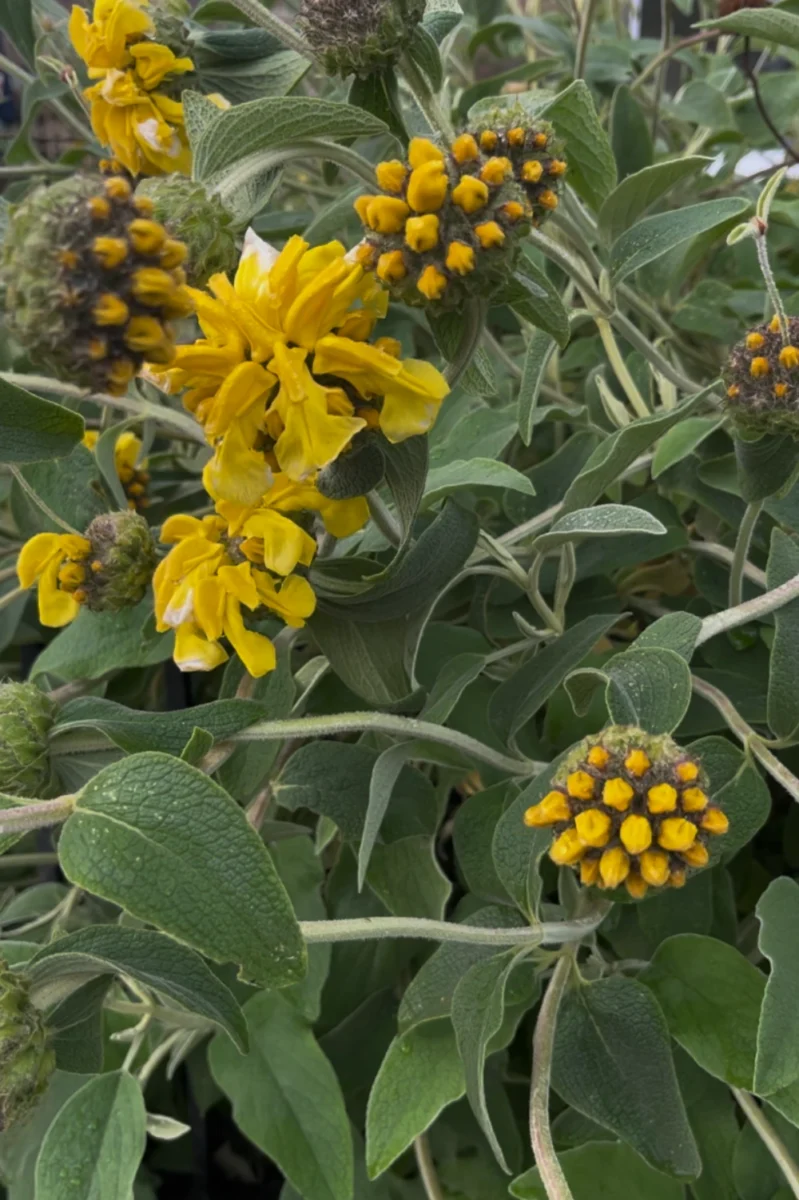
Overview:
Phlomis fruticosa is an evergreen shrub native to the Mediterranean. It has woolly grey-green leaves and golden-yellow flowers that bloom in late spring to early summer. Growing up to 1.5m tall and wide, it provides year-round structure and colour.
Hardiness:
- Hardy to around -10°C (14°F)
- Suitable for USDA Zones 8 to 10
- In colder climates, it may need protection or be grown in a sheltered microclimate
Growing Conditions:
- Requires full sun and very well-drained soil
- Thrives in poor, sandy or stony soils
- Dislikes heavy clay or wet winter conditions
Care Tips:
- Prune lightly after flowering to maintain shape
- Avoid hard pruning into old wood, as it may not regrow
- In colder areas, protect roots with mulch and avoid winter wet
Best For:
- Mediterranean and gravel gardens
- Coastal locations
- Evergreen structure in drought-tolerant planting
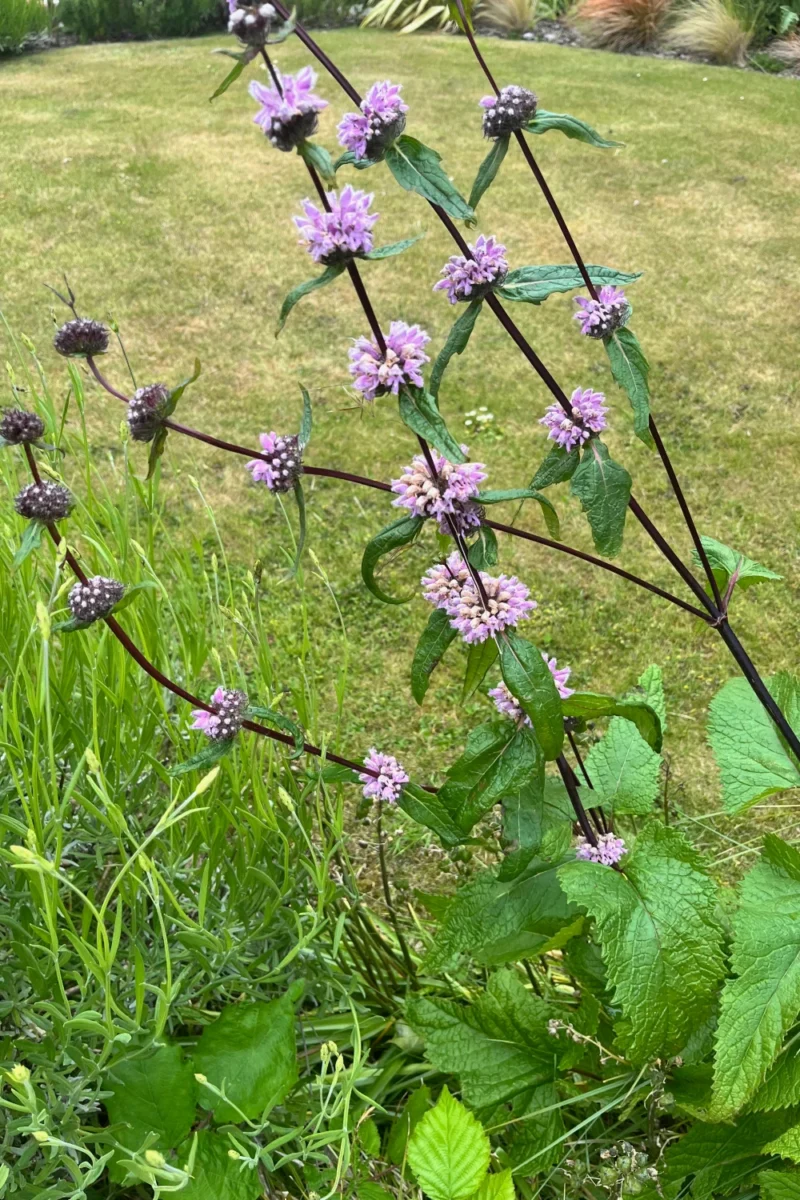
Choosing the Right Phlomis for Your Garden
When selecting the right Phlomis, consider your local climate, soil type, and how much winter interest or evergreen structure you want:
- For cold climates and strong winter structure: Go for Phlomis russeliana. It’s fully hardy, robust, and its seed heads are beautiful through the colder months.
- For height and movement in pollinator gardens: Choose Phlomis tuberosa. Its tall, airy stems and lilac blooms blend wonderfully with other perennials and grasses.
- For Mediterranean-style or low-maintenance gardens: Phlomis fruticosa is ideal. Just be mindful of its hardiness and give it a warm, dry, sunny spot.
All three Phlomis varieties are low-maintenance once established, drought-tolerant, and a hit with bees — making them not only beautiful but ecologically valuable additions to your garden.
Final Tip: Avoid rich soils and overwatering, and give Phlomis space to shine. These are plants that thrive on tough love and reward you with long-lasting interest in return.
Ready to add structure, pollinator power and year-round beauty to your garden? Phlomis has you covered.
Martin Cole has been an avid plant lover and gardener for more than 20 years and loves to talk and write about gardening. In 2006 he was a finalist in the BBC Gardener of the Year competition. He is a member of the National dahlia Society.
He previously lived in London and Sydney, Australia, where he took a diploma course in Horticultural studies and is now based in North Berwick in Scotland. He founded GardeningStepbyStep.com in 2012. The website is aimed at everybody who loves plants or has been bitten by the gardening bug and wants to know more.
Gardening Step by Step has been cited by Thompson and Morgan, the UK’s largest mail order plant retailer, as a website that publishes expert gardening content.


